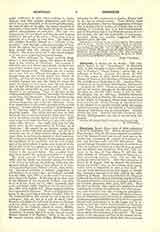

Dionysias, a titular see in Arabia. This city, which figures in the “Synecdemos” of Hierocles (723, 3) and Georgius Cyprius (1072), is mentioned only in Parthey’s “Prima Notitia”, about 840, as a suffragan of Bostra. Lequien (Or. christ., II, 865) gives the names of three Greek bishops, Severus, present at Nica a in 325, Elpidius at Constantinople in 381, and Maras at Chalcedon in 451. Another, Peter, is known by an inscription (Waddington, Inscriptions. de Syrie, no. 2327). Fifteen or sixteen titular Latin bishops are known throughout the fifteenth century (Lequien, op. cit., III, 1309; Eubel, I, 232, II, 160). Waddington (op. cit., 529 sqq.) identifies Dionysias with Soada, now es-Suweda, the chief town of a caza in the vilayet of Damascus, where many inscriptions have been found. Soada, though an important city, is not alluded to in ancient authors under this name; inscriptions prove that it was built by a “lord builder Dionysos” and that it was an episcopal see. Noldeke admits this view. Gesenius identifies Dionysias with Shohba (Philippopolis), but this is too far from Damascus.
S. PETRIDES

